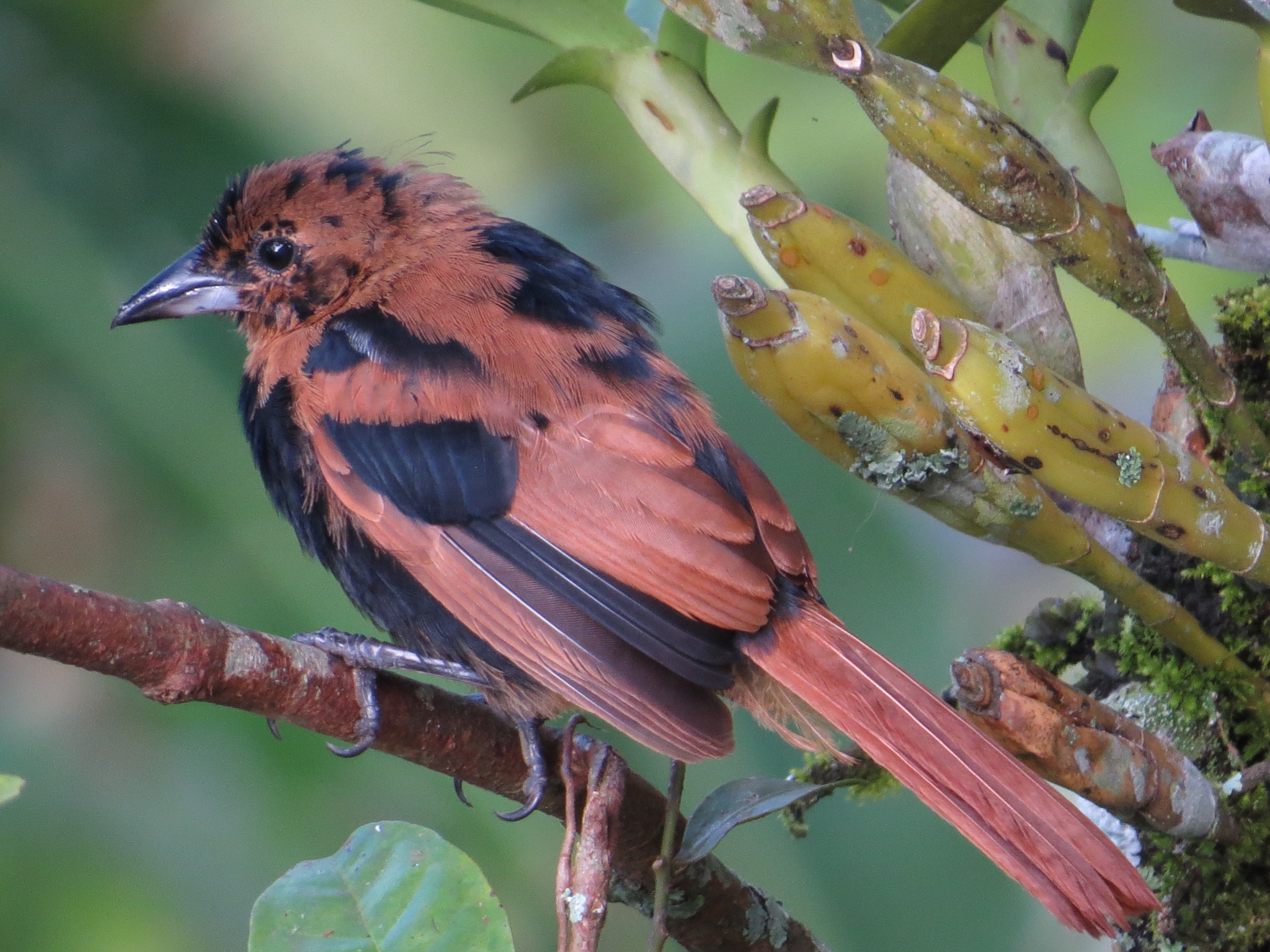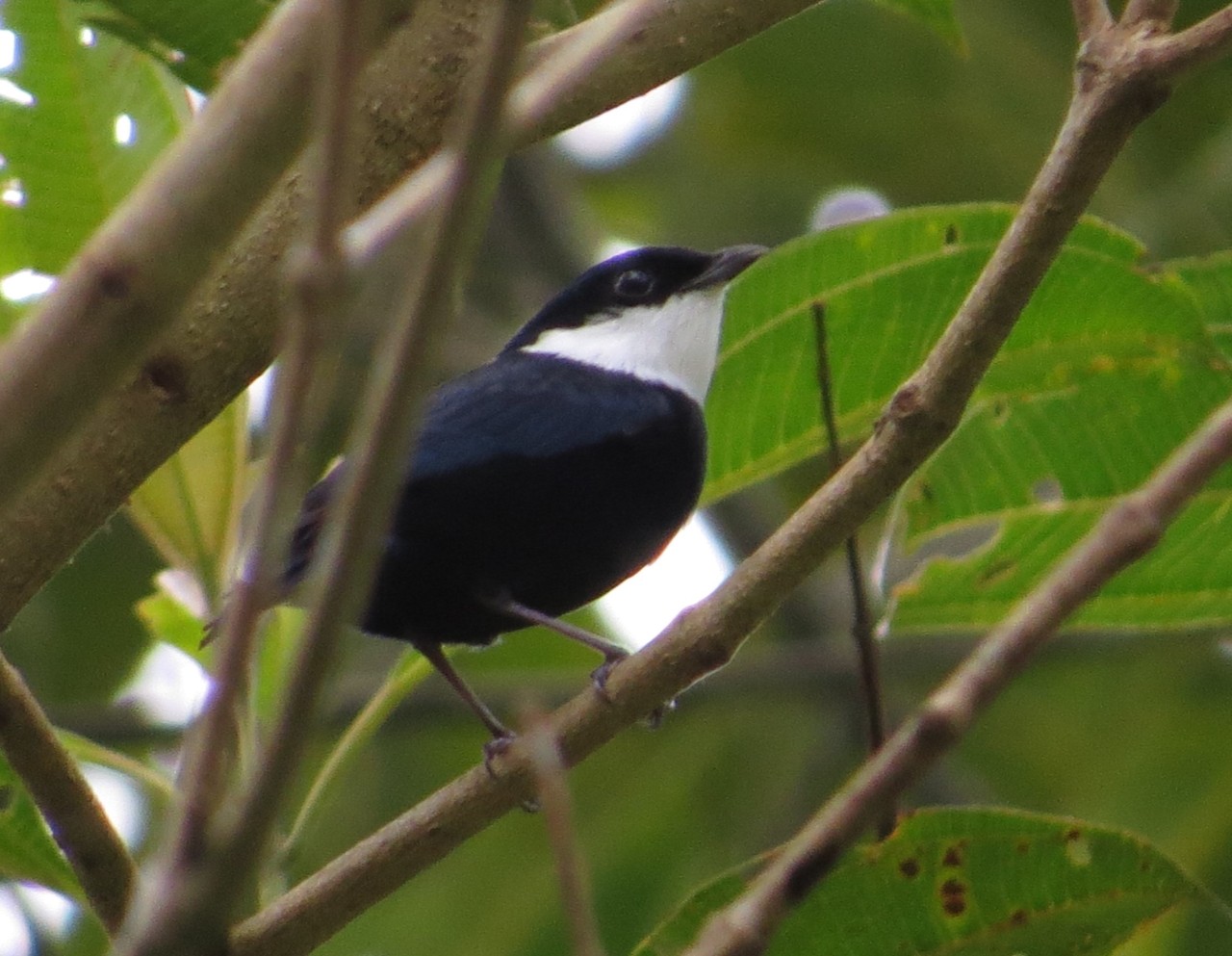When I want to get away into thick forest my nearest option is to walk the dirt road from my house to the cabins, rarely inhabited, down at the lower elevation of San Diego. Here I can find numerous species that never appear in San Antonio. This week I found two species that perhaps are resident there but that had evaded me until now. The first is the White-ruffed Manakin (Corapipo altera), one of 8 manakin species resident in Costa Rica. These diminutive birds feed mostly on fruit. The female White-ruffed Manakin is hard to identify if you don’t spot the whitish throat, but the male’s black-and-white contrast is highly distinctive. On this occasion I found pairs at two locations and spotted the females first. I carry no camera and so all photos in this post are from files.

Female White-ruffed Manakin near Acosta ; photo by John Beer 
Male White-ruffed Manakin at the Rio Tuis; photo by John Beer
Watch out also for the White-crowned Manakin (Dixiphia pipra), which has the black-and-white head pattern reversed. It is found in almost the same range but is much less common. However, I did find a male at San Diego on one occasion some years ago.
White on black was featured again when White-shouldered Tanagers (Tachyphonus luctuosus) joined mixed flocks at the same two locations. This fairly common lowland species is rarely found above 750 m and so was a bit of surprise. San Diego’s cabins are at about 1000 m elevation. I saw two pairs at two different locations, the second pair lower down at perhaps 850 m. The male is an all-black bird with a conspicuous white shoulder patch, not to be confused with a rather common garden bird, the White-lined Tanager (Tachyphonus rufus) – rufus because the female is uniform rufous-brown in colour. Here’s a comparison of a male of each species:

Male White-shouldered Tanager at nearby Santa Rosa; photo by John Beer 
Male White-lined Tanager at Paso Marcos; photo by John Beer
Note the barely visible white bit in the wing of the male White-lined Tanager; the bluish cast comes from the particular light conditions and is not a field mark; the beautiful bird lurking behind is a Crimson-collared Tanager (Ramphocelus sanguinolentus).
Unfortunately, I first published, erroneously, a shot of a Carmiol’s Tanager (Chlorothraupis carmioli), a big-eyed and much more yellow bird! This species is no longer even regarded as a tanager (Thraupidae) but rather a grosbeak (Cardinalidae). In the meantime, I still offer John’s great pic of an immature male White-lined Tanager from his garden in Santa Rosa:

Juvenile male White-lined Tanager at Santa Rosa ; photo by John Beer
The female White-shouldered Tanager can be a bit of a puzzle if there is no male around; the good news is that there usually is! I include the shot of the juvenile male White-lined Tanager for two reasons: one, it’s a great pic, and two, it shows how juveniles of this species look like dull versions of the female in their first few months. This young male is changing his spots, as they say!
And now, in what a hope is a final revision, here is the female White-shouldered Tanager paired with a female White-lined Tanager. They can’t be confused with each other, but for identification of the female White-shouldered when no male is present I think it’s best to look for the whitish throat.

Female White-shouldered Tanager at La Marta; photo by John Beer 
Female White-lined Tanager at Santa Rosa; photo by John Beer

